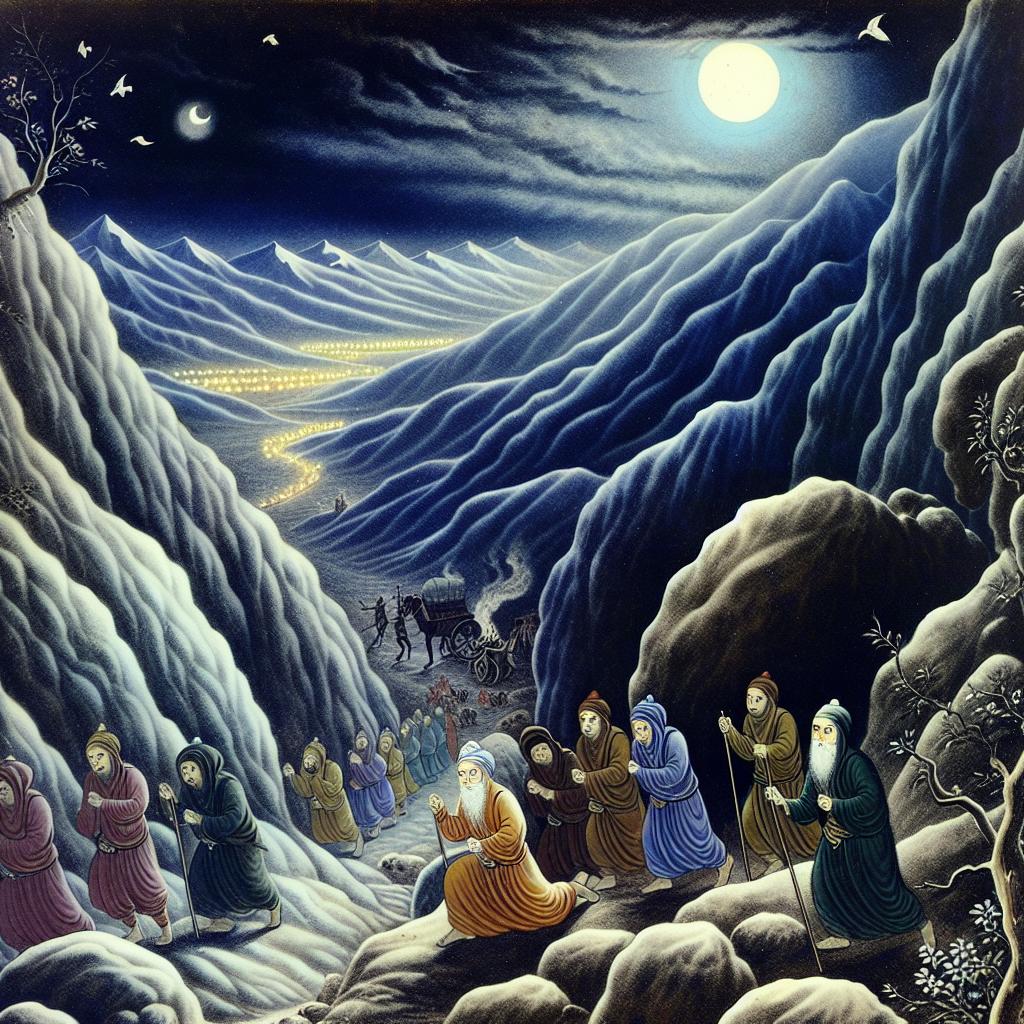The Dalai Lama’s Escape to India
In 1959, the 14th Dalai Lama, Tenzin Gyatso, undertook a perilous journey to escape from the Chinese authorities in Tibet. His escape was a significant event in Tibetan history, marking the beginning of the Tibetan diaspora and garnering international attention.
Background
Tenzin Gyatso was born in 1935 in a small village in northeastern Tibet. Identified as the reincarnation of the 13th Dalai Lama at the age of two, he was enthroned as the 14th Dalai Lama in 1940. This enthronement took place during a notably tumultuous period for Tibet. In 1950, the geopolitical landscape of the region changed significantly when the People’s Republic of China, led by the Communist Party under Mao Zedong, asserted its claim over Tibet. This assertion ignited a series of tensions and conflicts as many Tibetans felt their sovereignty was being threatened.
For the next decade, tensions simmered between the Chinese administration and the Tibetan people, whose distinct cultural, spiritual, and political identity was at odds with Chinese governance. This uneasy relationship between the two groups eventually escalated, culminating in a mass movement against Chinese rule.
The Uprising of 1959
The uprising began on March 10, 1959, as thousands of Tibetans gathered around the Norbulingka Palace in Lhasa, their capital, fueled by the belief that the Chinese Government was planning to abduct the Dalai Lama. The Tibetan population, fiercely protective of their spiritual leader, expressed massive resistance. This event, known as the Tibetan Uprising, is a pivotal moment marking active resistance against Chinese authority.
In the volatile atmosphere and fearing for his safety amidst whispers of plans to detain him, the Dalai Lama faced the difficult decision to leave Tibet. His decision to flee was not made lightly. It involved considering the immediate danger to his life, the potential threat to his people, and the desire to maintain the continuity of Tibetan spiritual and political leadership.
Journey to India
The decision made, on March 17, 1959, the Dalai Lama disguised himself as a soldier and left Lhasa under the cover of darkness. His departure was conducted with the utmost secrecy to avoid alerting Chinese patrols. Accompanied by a small group, including family members and trusted advisors, he embarked on what would be a grueling 15-day journey to India.
This journey took them through some of the most challenging parts of the Himalayan region, a trek that demanded resilience and resourcefulness. Traversing such treacherous terrain required the party to move primarily at night, adding to the challenge but reducing the likelihood of detection. This clandestine journey was marked by cold nights and stealthy progression through hazardous landscapes, a testament to the commitment of the Dalai Lama and his group to preserve the cultural and spiritual heritage of Tibet.
Arrival in India
The arduous journey eventually brought the group to the Indian border. Upon reaching safety, the Dalai Lama sought asylum from the Indian government. Prime Minister Jawaharlal Nehru, recognizing both the humanitarian need and the potential political implications, granted the asylum request. On March 31, 1959, the Dalai Lama crossed safely into the Indian state of Arunachal Pradesh.
The Indian Government provided refuge to the Dalai Lama in Dharamshala, where he established the Tibetan Government-in-exile. This relocation to Dharamshala marked the beginning of a new chapter for the Tibetan community, now striving to preserve their traditions and identity far from their homeland.
Significance
The Dalai Lama’s escape had profound implications. It not only underscored the plight of Tibetans, capturing global attention, but also marked the beginning of Tibetan exile communities worldwide. These communities, initially primarily in India, have now spread around the globe, keeping alive Tibetan culture, language, and religion while advocating for their rights and the autonomy of their homeland.
Furthermore, his escape became a catalyst for international discussions on human rights and self-determination. As a figure of spiritual and political significance, the Dalai Lama championed the Tibetan cause on the global stage. His continued advocacy for a peaceful resolution to the Tibet-China conflict has earned him recognition as a symbol of non-violence and a beacon of hope for non-violent resistance movements worldwide.
Since his exile, the Dalai Lama has been committed to fostering dialogue and understanding. He has traveled extensively, addressing global audiences on issues of peace, compassion, and the importance of upholding human dignity irrespective of political borders. His teachings emphasize the interconnectedness of all human beings, advocating for kindness and compassion as the foundation for global peace.
In Dharamshala, the Tibetan Government-in-exile has worked tirelessly to establish a robust cultural and educational infrastructure, ensuring the preservation of Tibetan heritage. Institutions devoted to Tibetan medicine, arts, and language form the bedrock of the community’s efforts to maintain their distinct identity in exile. Efforts to personally connect with the international community have also led to a broader appreciation and support for the Tibetan cause.
The Dalai Lama’s escape from Tibet, while initially a story of survival, has over time become an emblematic representation of resilience, faith, and the enduring struggle for justice and peace. His presence continues to shine a light on the issues facing the Tibetan people and encourages a dialogue based on compassion and mutual respect between conflicting parties.
For more information about the Dalai Lama and his activities, visit the official website of the Dalai Lama.

